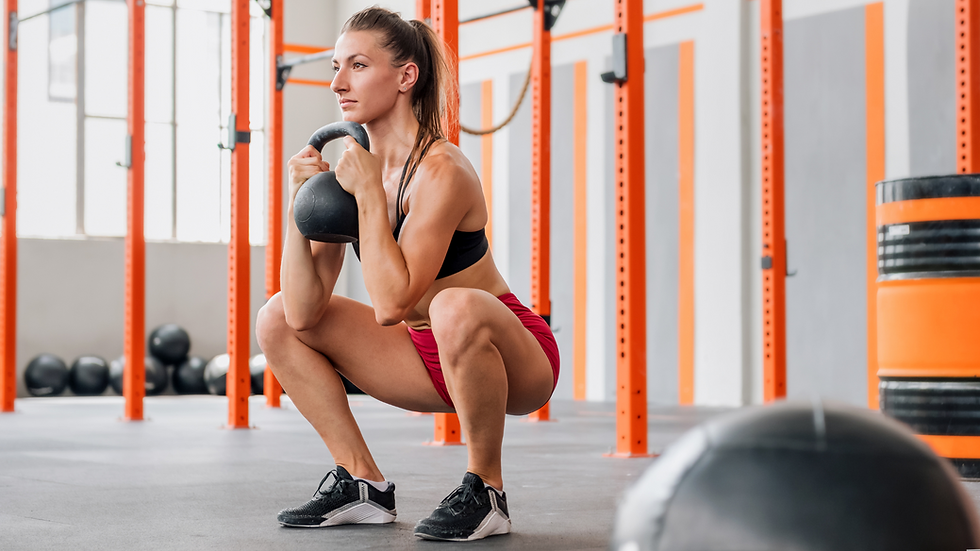An Underrated Exercise for Strength, Mobility, and Lifespan
- 2110 Fitness

- Sep 3
- 3 min read
Some of the most effective exercises are also the simplest. Case in point: the dead hang. Just grab a pull-up bar, let your body weight hang, and breathe. At first glance it looks too basic to matter, but dead hangs pack an impressive punch for both performance and longevity. They build grip strength, decompress the spine, and challenge the shoulders in a way few other moves can. For clients chasing strength, mobility, or simply feeling better in their bodies, this humble exercise is worth a spotlight.

Grip strength is one of the strongest predictors of longevity. Multiple large-scale studies have shown that lower grip strength correlates with higher risk of cardiovascular disease, disability, and even all-cause mortality. While grip is only one marker of overall health, it reflects both neuromuscular function and resilience. Dead hangs directly target this quality in a simple, measurable way.
Beyond grip, dead hangs also create gentle traction through the spine. Many individuals spend hours hunched over desks, compressing their spinal discs. Hanging allows gravity to create space between vertebrae, easing tension and encouraging better posture. It’s like a mini decompression session built into training.
Finally, the shoulders benefit. Dead hangs strengthen the stabilizing muscles of the upper back and rotator cuff, improve overhead mobility, and can help counter the rounded posture so common in modern life.
How to Perform a Dead Hang
The setup is simple, but attention to detail matters:
Use a sturdy pull-up bar, squat rack attachment, or playground bar.
Grip the bar just outside shoulder width, palms facing forward (or neutral if using parallel handles).
Allow the body to hang naturally, but avoid excessive shrugging. Think about keeping the shoulders “packed” slightly down.
Keep ribs tucked and core engaged; don’t arch the low back excessively.
Breathe slowly and evenly, allowing the spine to lengthen.
Beginners may only manage 10–20 seconds. With practice, holding for 30–60 seconds becomes a good target. Multiple sets can be used, depending on goals and tolerance.
Variations to Explore
Passive Hang
The simplest form: relax into the bar, allowing the shoulders to elevate fully. Great for spinal decompression and overhead mobility.
Active Hang
Engage the lats and pull the shoulders down away from the ears. This variation strengthens scapular stability and prepares for pull-ups.
Single-Arm Hang
Advanced option that builds extreme grip strength and shoulder resilience. Start with partial weight (e.g., holding one wrist with the opposite hand) before progressing to full single-arm hangs.
Towel or Fat Grip Hang
Wrapping a towel over the bar or using thick grips challenges the forearms and grip endurance even more.
Common Mistakes to Watch For
Overarching the lower back: Keep the core engaged to avoid hanging from the spine passively.
Shrugging excessively: Shoulders shouldn’t jam into the ears in an active hang; teach clients to pull them down and stabilize.
Going too long too soon: Hanging to failure may strain grip or irritate the shoulders. Progress gradually.
Longevity isn’t just about lifespan—it’s about maintaining the ability to move, carry, lift, and play. Grip strength predicts functional independence. A decompressed spine and healthy shoulders reduce the risk of chronic pain and limited mobility. Dead hangs deliver on all three.
They also fit seamlessly into modern life. Few exercises require so little equipment, skill, or setup yet return such wide-ranging benefits. A pull-up bar in a garage or even a playground swing set can be enough to build stronger hands, freer shoulders, and a healthier spine.
Dead hangs are deceptively simple but powerfully effective. By improving grip strength, decompressing the spine, and mobilizing the shoulders, they offer a trifecta of benefits for performance and long-term health. For coaches, they’re easy to program, scale, and explain. For clients, they’re a reminder that sometimes the most basic tools are the ones that keep us moving well into later life.
Leong, D. P., et al. (2015). Prognostic value of grip strength: findings from the Prospective Urban Rural Epidemiology (PURE) study. The Lancet, 386(9990), 266–273.
McGill, S. M. (2002). Low Back Disorders: Evidence-Based Prevention and Rehabilitation. Human Kinetics.
Vigotsky, A. D., & Lehman, G. J. (2018). Shoulder mechanics in hanging exercises. Strength & Conditioning Journal, 40(5), 92–97.
.png)



Comments